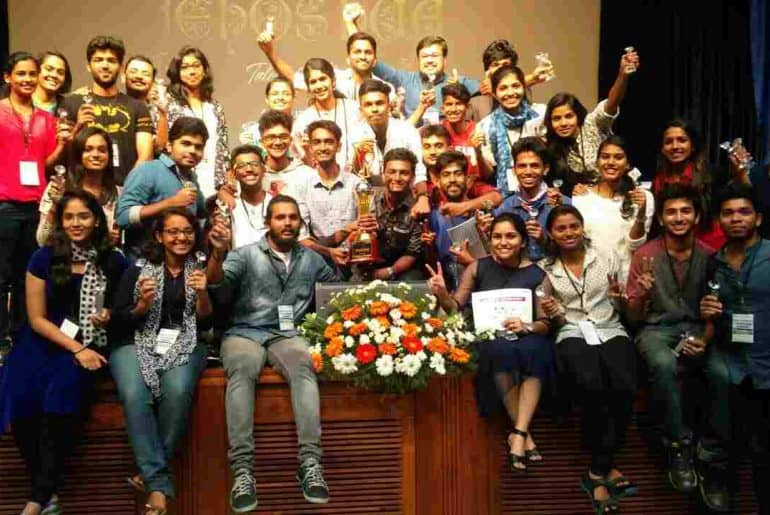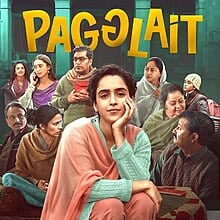The Architect of the Indian Constitution, the Chairman of the Drafting Committee, Dr. B.R. Ambedkar left us our Constitution as his legacy. We all know about his legacy, but do we know about the story of its making? Let’s talk more about Ambedkar and the Preamble.
The Constitution – the document that gave the coveted status of ‘Republic’ to India – is the result of years of hard work of Dr B.R. Ambedkar, who analyzed every other constitution that existed to make sure that India received the very best that it can. The Constituent Assembly worked together for a long time. During this time, all of its members debated each and every word that they wrote on the Constitution.
When we work on our college projects or society-work, however hard the work may be, we bond with our teammates and create memories – memories which we would recall as fond anecdotes in our later years. So, thinking about the magnitude of ‘Constitution-making’ in terms of a project, we can only imagine the number of stories behind each word of the Constitution.
Don’t worry, I am not going to talk about different articles like a smug lawyer; I am going to talk about the stories behind them, or rather, the stories between Ambedkar and the Preamble. Because, let’s face it, the Preamble is the only part of the Constitution that we actually know. (Even if it is because we poured over it in our good old NCERTs while bored in class.)
The Preamble is the Identity Card or the ‘horoscope’ of the Constitution. It is the soul and substance of our Constitution. Being the introduction or the preface of the Constitution, it is naturally at the very beginning of the Constitution. But did you know that the Preamble was written at the very end?
This was because the Constitution makers did not want the Preamble to be ‘misleading’ about the Constitution; they did not want it to say things that weren’t in the document. That’s why the Preamble by Ambedkar was taken up for discussion at the very end, on 17th October 1949 – just 39 days before its adoption.
But it doesn’t end here; the ‘Aims and Objectives Resolution’ is the source of the Preamble. It is after J.L. Nehru proposes it on 17th December 1946 that the Preamble comes into play on 22nd January 1947. Here, the resolution contained the ‘blueprint’ of the Constitution that the makers had to follow. So, it was one of the first things that the Assembly debated upon. First, they decided on the Resolution. Then, they wrote the Preamble. Well, there’s some food for thought!
Now, while reading the Preamble, the very first line we see is, “We, the People of India”. Now, what does this statement signify? It says to everyone that India is finally free – it is not a dependency or dominion, but a full-fledged independent Sovereign. But the real significance is that it talks about the power of the Constitution. The Constitution is the most powerful entity in India – but who it gave that power?
The answer is people – the people of India gave the Constitution its power. The principle of autochthony is of utmost significance.
But did anyone ever think of this – what gave the Constituent Assembly the right to use those words? The common people did not elect a single member of the Constituent Assembly. We had no elections! The Members of the erstwhile Provincial Legislative Councils elected them, and the 2nd Cabinet Mission to India, promulgated by the British government, sanctioned them! So, there is no real role of the people here.
Then what gave them the right to use ‘the people of India’?
The answer is this: the Constituent Assembly that the the British Cabinet Mission sanctions to India, a clause of the Government of India Act, 1947 – which was the reason of India’s partition while giving Independence to India and Pakistan – which stipulates that the Constitution drafted must be sent to the British before adoption. But India didn’t send it; or rather, Ambedkar didn’t. When asked about it, he said nonchalantly, “I forgot about it. It was a procedural error.”
And why is this mistake, a truly beautiful and wonderful ‘mistake’?
When Ambedkar ‘forgot’ about it, he prevented the Constitution from reaching the British, thus making our Constitution completely free from external influence. This is what gives them the right to use ‘We, the People of India’ (P.s. it is a verbatim copy from the Constitution of the USA).
Many people don’t know this, but the words ‘Socialist’ and ‘Secular’ are not in the original Preamble by Ambedkar. They come into addition later by the 42nd Constitution Amendment Act by the Indira Gandhi government during the Emergency.
Now rises the really troubling question? Why? Why would a person like B.R. Ambedkar leave out these two words which were so crucial to the nature of the Indian state?
The answer is that he didn’t. He had these principles in the Constitution, although in a different form. He just didn’t use the term “socialist”, as it directly referred to Marxist socialism during the 1950s. Under Marxism, the economic philosophy says that the infrastructure, properties and ultimately, the economy is under control of the state. There is no private property, and people receive an equal income.
However, Ambedkar didn’t want this kind of socialism for India. Rather, he wanted Democratic Socialism. It is a blend of Gandhian socialism and Marxism, and income is equal in division among people. Instead, people get equal opportunities to earn in a ‘mixed’ economy. Both the public and private sectors play. So, since Ambedkar didn’t want the world to misinterpret India as a Marxist state, he didn’t include the word ‘Socialist’ in the Preamble. So, how did he put it then? He wrote the concept in the Preamble as ‘Equality, of status and opportunity“.
As for ‘Secular’, Ambedkar didn’t include it because secularism referred to ‘Western Secularism’ in the 1950s, which Ambedkar didn’t want for India. Western secularism refers to the complete and absolute separation of powers between the Church and the State.
For example, if there is any discrimination in any religion, the state doesn’t interfere, even though the government might be aware of it.
Ambedkar didn’t want that for India– instead, he wanted a positive concept of secularism. Ambedkar wanted India to have no state religion, but if anyone commits anti-national activities or discrimination in the name of religion, he wanted the government to interfere and rectify the wrong. So, how did he put it in the Preamble (take a second, go through the text and see if you can find, lol)? He wrote what he wanted as ‘Liberty, of thought, expression, belief, faith and worship’. Beautifully brilliant, isn’t it? All credits to Dr. Ambedkar. But why did Indira Gandhi then put it in the amendment? After the Emergency, she made the amendment to put out a strong political statement.
Wow, so much story in just 14 lines and this isn’t even the end yet. There is a long debate on whether the Preamble is a part of the Constitution or not (it has been established that it is). There is a debate on if you can amend it (you can be, save for the fundamental features), if you can derive power from it, if you can justify it, and so many more. This is all thanks to one man, the great Dr. B.R. Ambedkar.
Read also: https://dubeat.com/2020/04/dr-b-r-ambedkar-and-caste-system/
Image Credits:
Harish Neela Lingam











